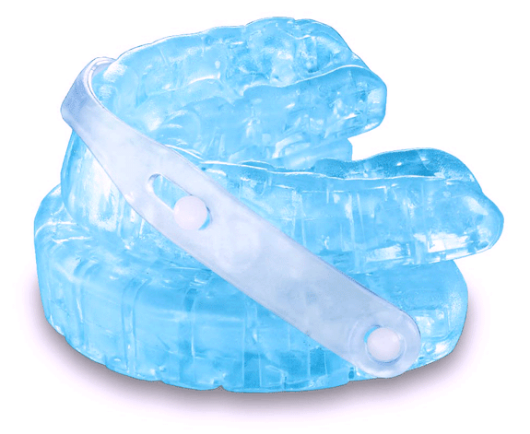
Sleep apnea is a serious condition characterized by absence of breath during sleep. In other words, during sleep, the soft tissue in the throat relaxes what causes it to collapse and block the airway. Blocked airway means lower amount or no oxygen going to the lungs. This causes pauses in the breathing pattern. One breathing pause can last from few seconds to 1-2 minutes, which is why sleep apnea patients wake up frequently during night grasping for air. Irregular sleep pattern gratefully affects both physical and mental health.
Sleep apnea can cause a stroke, or more serious heart problems, frequent headaches, depression, anxiety, fatigue, changes in mood, etc. This is why sleep apnea and snoring, regardless of whether it is a mild or serious condition, must be treated. Of course, healthy diet, regular exercise, avoidance of alcohol, nicotine and caffeine based products is more than recommended. Aside from changing your lifestyle and eating habits, there are numerous sleep apnea devices and different therapies that have proven successful in minimizing and preventing sleep apnea symptoms. One of them is a mandibular advancement splint (MAS).
If you have been recommended a mandibular advancement splint, it is wise to learn more about this device and how it works. Mandibular advancement splint simply stabilizes the airway. As we said earlier, when you fall into deeper levels of sleep, the jaw falls back and so does the tongue blocking the airway and stopping the airflow. With a mandibular advancement splint, you will stabilize the airway and have enough airflow during sleep. Mandibular advancement splint is a plastic device worn in the mouth designed to move the jaw forward and hold it in place, preventing the airway from collapsing. The mandibular advancement splint prevents your brain from clenching due to the loss of air and arousing you to wake you up to breath. Mandibular advancement splint allows you to sleep freely all night long.
Thanks to the mandibular advancement splint you will not wake up during the night, what means that you will rest better and wake up energized and with batteries full ready to deal with everyday tasks. Mandibular advancement splint addresses the cause of the problem. It can be fitted to any size mouth, customized for best-for-you jaw position (this is usually done by your dentist); it is easy to use and is very comfortable. Of course, just like with any sleep apnea treatment, there are certain problems associated with mandibular advancement splint, such as:
- Jaw pain
- Toothache
- Build-up of saliva in the mouth
- Sore mouth
- Discomfort
- Teeth damage or even change teeth position
To ensure you experience no side effects, it is crucial to consult with your dentist and follow your checkup schedule.





















